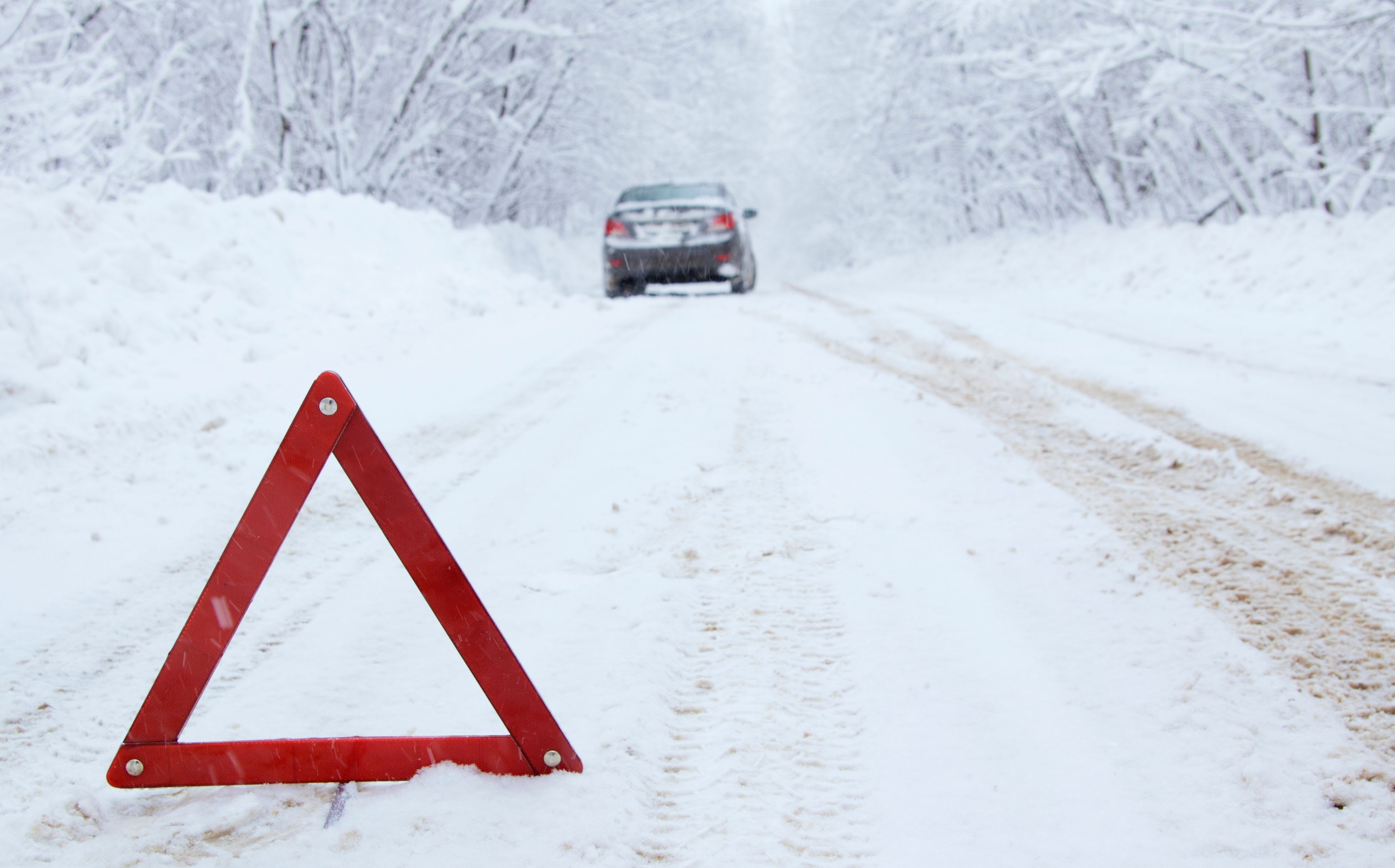Finding yourself stuck on a highway or any road is never enjoyable, especially during winter when the weather can be particularly unsettling.
In fact, if you’re not properly equipped to tackle it, such a situation can even be dangerous.
Recommended Reading: Driving in the Country? CAA’s Got Your Back
When on the road, one of the most important things that every vehicle must have in it is a roadside safety kit. Not only can a roadside safety kit be very helpful during an emergency, but it can also be the difference between being stuck for hours and getting back on the road quickly.
A roadside safety kit, as the name suggests, is a kit or a bag that contains items that can help the driver (and passengers) of a vehicle during a roadside emergency.
A roadside emergency is something that causes a hindrance in your journey and forces you to stop. This could be a flat tire, getting stuck in the snow, running out of fuel, battery issues, bad weather, etc.
So, we’ve put together a list of essential items that must be a part of your roadside safety kit.
1. A triangle reflector
As soon as you experience a car breakdown, one of the first steps that you must take, after getting your car to the side, is to place the triangle LED reflector behind it at a distance.
This helps ensure your safety by signaling the cars coming from behind you to slow down because you’re stationary and facing an emergency.
2. Outdoor clothing
Living in Saskatchewan means enduring cold weather for most of the year. And one of the things that our province is famous for is sudden drops in temperature.
You never know when an “extreme cold warning” notification might pop up on your phone, which is why it’s always a good idea to have some winter gear as part of your roadside safety kit.
These include, but are not limited to, mitts or gloves, toques, jackets, footwear, socks, and blankets.
3. Non-perishable food
While we hope that you never find yourself in a situation where you’re stranded for such a long time that you’ll eventually get hungry, it’s advisable to pack some non-perishable food items just in case.
This could be anything that doesn’t go bad for an extended period of time (at least a year) and can also help provide you with the necessary nourishment/energy needed till the time help arrives.
Some good examples are granola bars and energy bars.
4. Bottled water
As before, we hope that if you’re stranded, it’s never for a long duration. But just in case you are, it’s always better to have something and not need it instead of needing something and not having it.
One such thing is water. Always ensure that your roadside safety kit has plenty of bottled water to keep you hydrated in case of an emergency.
5. Flashlight and batteries
Being stranded during the day can sure be a humbling experience for sure. But being stranded during the night can be a whole other ballgame, especially if it’s for a longer duration.
As darkness ensues, visibility begins to diminish, and therefore always ensure that you have a flashlight (and some extra batteries) handy in your roadside safety kit to handle such emergencies.
6. A collapsible shovel
Travelling during the winters means sometimes having to drive through snow. Not only can that be a challenging thing to do on its own, but it can also lead to your car getting stuck in the snow.
Recommended Reading: 6 Things to Do When Your Car is Stuck in Snow
Therefore, it’s important to keep a shovel handy so that in case your car does get stuck in the snow, you can use it to remove the extra snow from around your tires to get yourself free.
While a conventional shovel might not be able to fit into your roadside safety kit, you can always choose to pack a collapsible kind that takes less space and is easily portable.
7. First aid kit
Depending on the type of emergency you find yourself in, it’s highly advisable that you have a first aid kit in your roadside safety kit too.
In the unfortunate event that either you or one of the other passengers is hurt during your emergency, you can use the first aid kit to provide yourself some temporary relief.
As part of the first aid kit, ensure that you pack bandages, ice and heat packs, scissors, medicines like aspirin, some gauze, adhesive tape, antiseptic cream, antiseptic wipes, etc.
8. Booster cables
We’re sure that almost everyone living in Saskatchewan (and other such cold places) must have experienced the ordeal of needing a battery boost during extremely frigid conditions.
You always have the option of calling in for roadside assistance. However, in case you don’t have access to it, keep a booster (or jumper) cable handy in your roadside safety kit.
If needed, use the cable to jumpstart your vehicle by connecting your battery to that of someone else’s. We do urge you to maintain caution while doing so and only proceed if you’re sure of how to do so.
9. Mobile phone charger
We know that you would always remember to carry your mobile phone whenever you take your car out for a spin. However, we also know that very few of you would carry your phone charger with you.
We get it. There’s no need for it, especially if you’re taking a small trip to, let’s say, the grocery store.
However, you never know when you might need it, which is why we strongly advise you to keep a spare mobile phone charger inside your roadside safety kit.
In case you’re stranded and have little or no battery in your phone, the spare charger can come in handy and help you call someone for help.
You can also use the CAA mobile app to skip the line and easily request roadside assistance.
10. Portable toolkit
If your vehicle already has some type of portable tool kit in it, then great. But, just in case it doesn’t, pack one in your roadside safety kit to ensure you have everything during an emergency.
Depending on what you need, a basic toolkit must consist of a screwdriver, pliers, wire cutters, an adjustable torque wrench, vise grips, and a pocket knife.
11. Window ice scraper
Living amidst the snow means always being prepared with tools that can help you tackle it. One such tool is an ice scraper that helps scrape the frost off your windshields.
In the event of an emergency, if you must wait a long time while you’re stranded, there’s a possibility that frost starts to deposit on your windshield due to the extremely cold climate.
In such situations, it’s a blessing to have a scraper handy to remove the frost and have visibility.
12. Tire pressure gauge
All vehicles come equipped with a tire jack, a wrench, and a spare tire. But what many of them might not have, is a tire pressure gauge that helps tell the approximate pressure in each tire.
Pack a portable tire pressure gauge in your roadside safety kit as having one can give you peace of mind knowing that your car tires are properly inflated.
Ready to hit the road? Don’t leave without us
Now that you know about the essential items that must be a part of an emergency roadside safety kit, it’s time to get them together and place them in your vehicle.
You can either keep them separately in the trunk of your car or can choose to keep them in a bag or cardboard box so that when needed you have the option of reaching out in an organized manner.
There’s also the option of buying a ready-to-go, portable roadside safety kit from one of our CAA stores. As a CAA member, you can enjoy special member prices in store as well as on our online shop.
Finally, while we wish that you never find yourself in a situation where you’re stranded and find the need to use your roadside safety kit, we do have you covered in case of any emergency.
You can always request roadside assistance through the CAA mobile app, our website, or by calling us at 1-800-CAA-HELP. Have peace of mind during your road trip adventures and always have the freedom to explore more with confidence.


